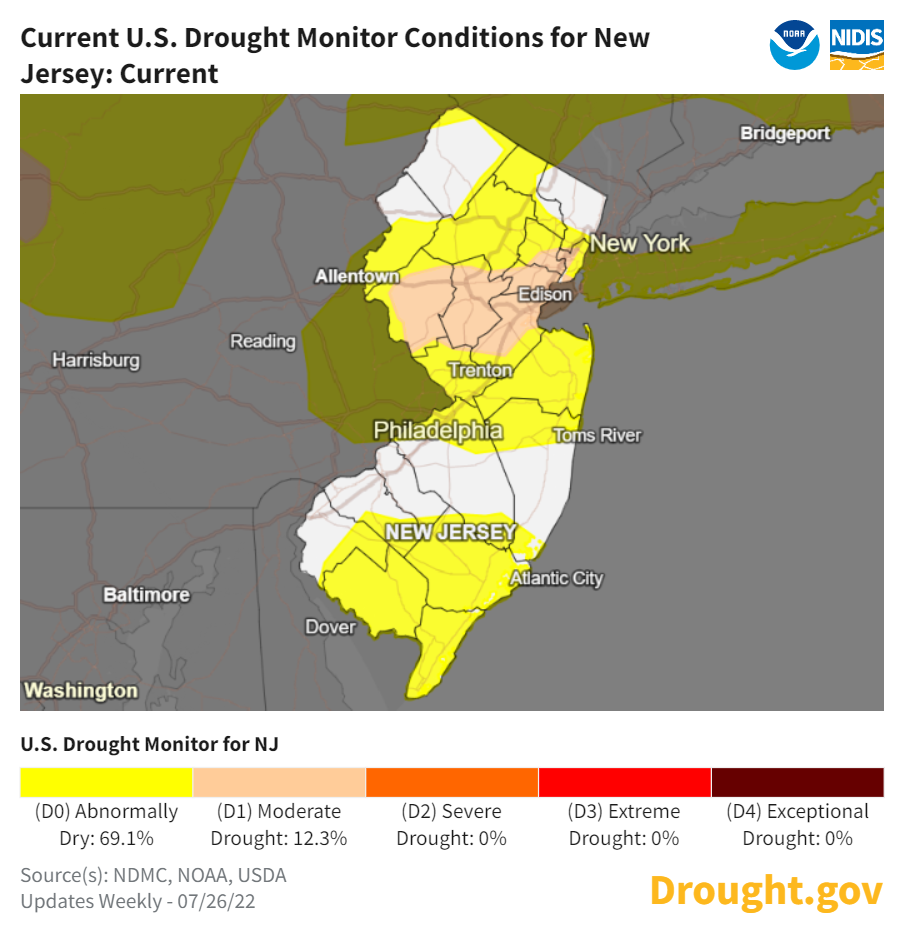Mon – Fri: 8:30 – 4:00
Closed from 12–1pm
Ewing, NJ 08628
Are your lawns and gardens drying up?
“Long-term drought continues, even as a wet spring and early summer have improved conditions in parts of the West. As of July 19, over 73% of the western U.S. is in drought.”[1]
 While we may all be aware to some degree of the extent of the western water crisis, here in NJ it has also been abnormally dry in most of the state since June. In fact, just last Tuesday, the Murphy Administration asked residents and businesses to conserve water as the state continues to experience a persistent period of hot and dry weather.
While we may all be aware to some degree of the extent of the western water crisis, here in NJ it has also been abnormally dry in most of the state since June. In fact, just last Tuesday, the Murphy Administration asked residents and businesses to conserve water as the state continues to experience a persistent period of hot and dry weather.
To date, our hotter and drier conditions have not impacted our drinking water supply significantly but continuing hot and dry conditions could. Residents and businesses are encouraged to take some precautionary steps to reduce water usage to ensure sufficient supplies throughout the summer.
“Now is the time for New Jersey to be especially mindful of water usage and proactively moderate our consumption,” said Commissioner of Environmental Protection Shawn M. LaTourette. “Although our reservoirs and other indicators are healthy, persistent hot and dry weather coupled with the high water demands of summer can quickly impact water supply. Simple steps, like reducing lawn and landscape watering, go a long way in preserving our water supplies and avoiding the necessity of significant restrictive measures.”
According to the U.S. Drought Monitor information released on July 28th, our area of the state is in “abnormally dry” status. [See New Jersey | U.S. Drought Monitor (unl.edu)] And, while the drought outlook is not predicted to persist, month_drought.png (1199×926) (noaa.gov), and despite the small amount of recent precipitation, precautionary scale backs will help reduce the risks that the drought will affect us on a large scale.
The 2020 New Jersey Scientific Report on Climate Change predicts that droughts may occur more frequently due to the expected changes in precipitation patterns. In fact, the report issues very contrary predictions for precipitation due to climate change, a sort of climate whiplash effect.
"While average annual precipitation totals show a slight increase, climate change is expected to exacerbate the intensity of rainfall events and extend the duration of drier periods."[2]
Indeed, “drought and heatwave conditions are occurring more frequently across the United States and are having significant impacts on ecosystems and society.”[3]
Whether our “abnormally dry” conditions persist, or rainfall returns to alleviate the current precipitation deficit, we encourage all residents and businesses to do their part to conserve water. Your actions do make a difference and can directly affect our local environment and waterways.
[2] https://www.nj.gov/dep/climatechange/docs/nj-scientific-report-2020.pdf page 40
[3] NJDEP | 2020 Scientific Report on Climate Change page 41.